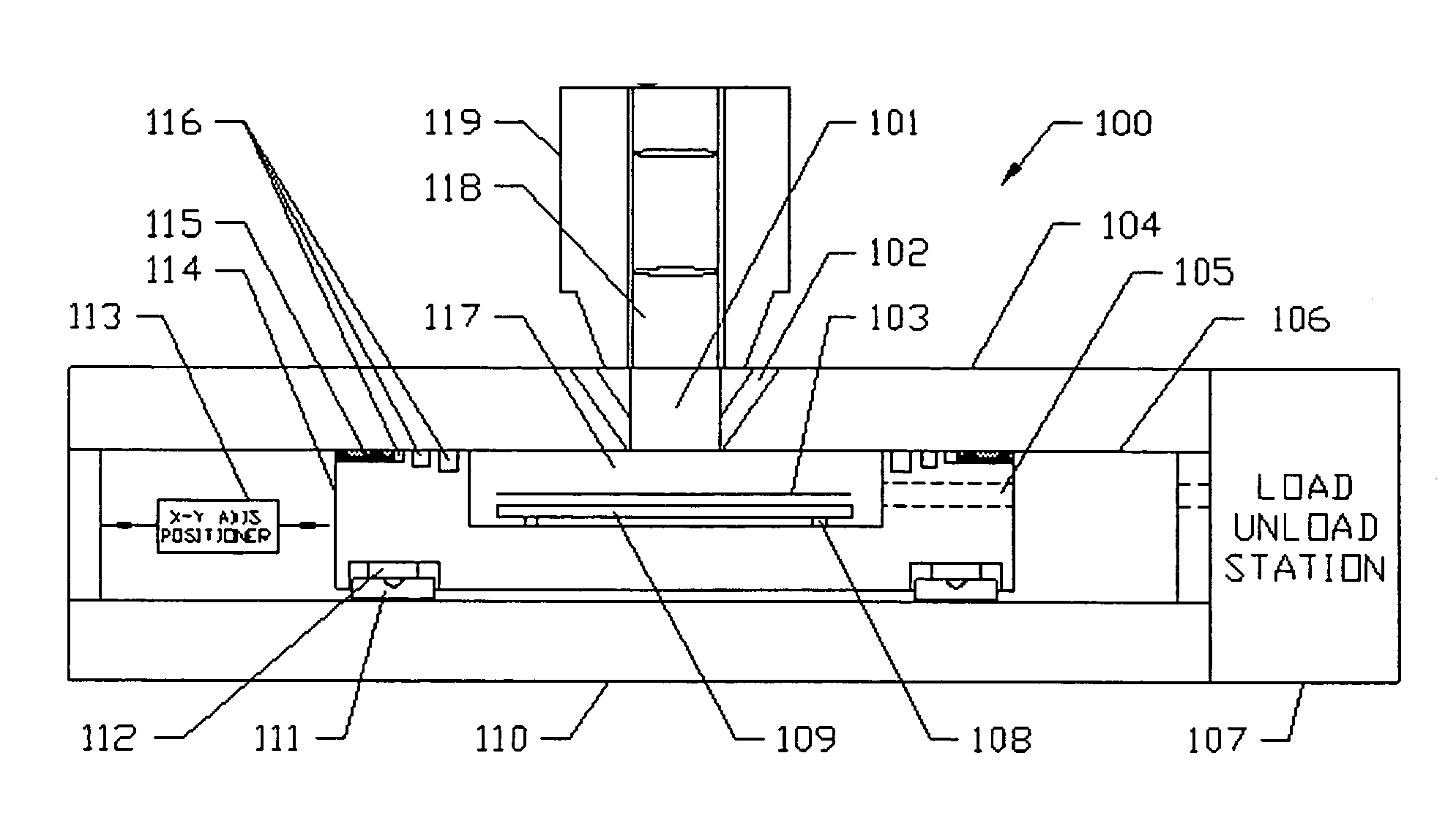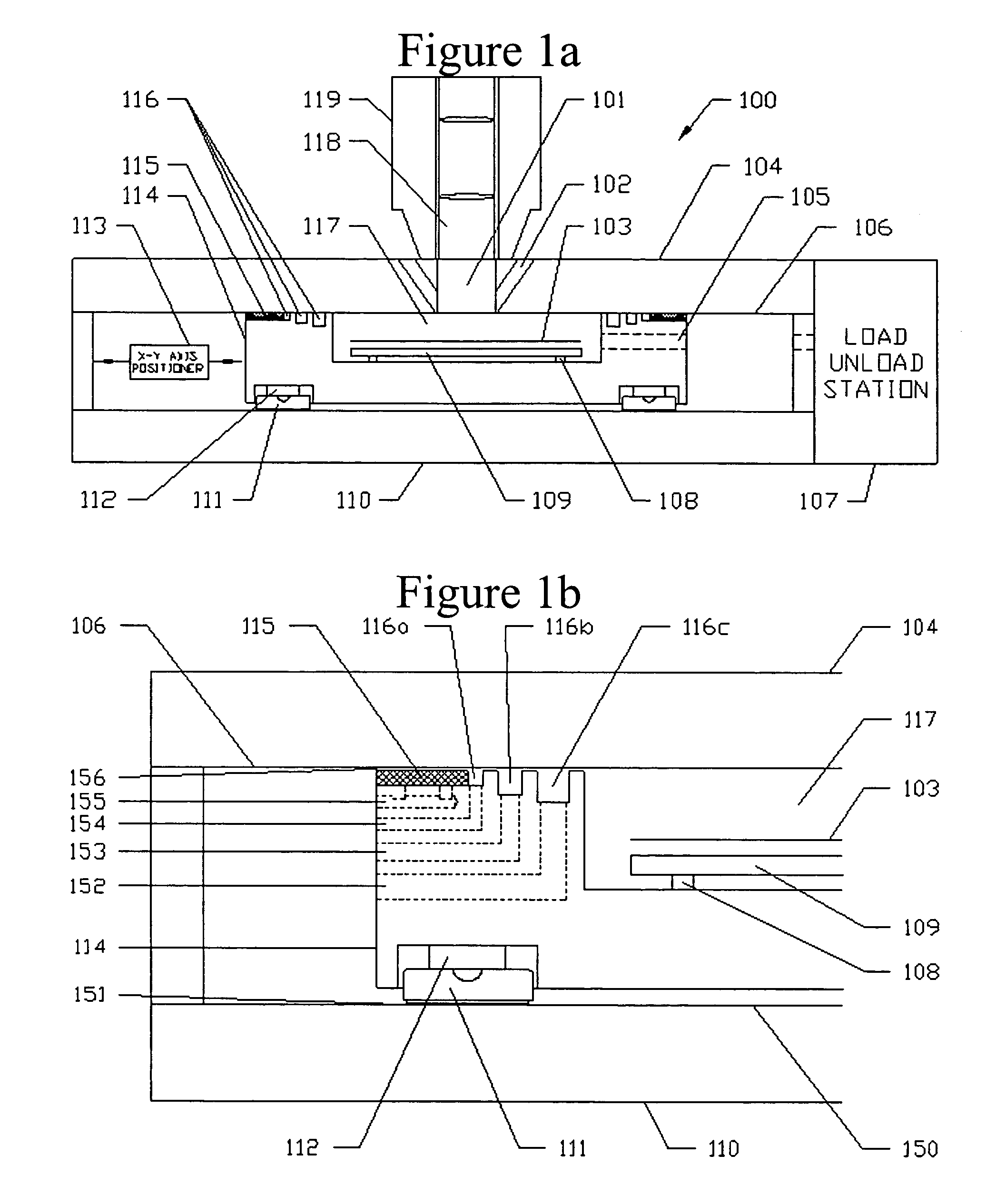Moving vacuum chamber stage with air bearing and differentially pumped grooves
a vacuum chamber and air bearing technology, applied in the field of equipment, can solve the problems of limiting optical techniques, difficulty in achieving the required precision, and technical difficulties in using air bearing stages in vacuum, and achieve the effects of improving the structural loop, reducing the requirements of vacuum pumping and pumping down time, and improving the structural loop
- Summary
- Abstract
- Description
- Claims
- Application Information
AI Technical Summary
Benefits of technology
Problems solved by technology
Method used
Image
Examples
Embodiment Construction
[0014] Preferred embodiments of the present invention will now be set forth in detail with reference to the drawings.
[0015]FIG. 1a is a side view sectional schematic of a vacuum chamber stage 100 used for precision positioning of the semiconductor wafer or substrate 103 while the substrate is maintained in a vacuum chamber 117. The object of the apparatus is to expose the substrate to some sort of a manufacturing, processing or inspection for the purpose of manufacturing microelectronics circuits there on. Typically the substrate is exposed to some sort of radiation; examples of the many species of radiation would include but are not limited to Ions, x-rays, ultraviolet or extreme ultraviolet, electron beams, DUV (deep ultraviolet), extreme ultraviolet (soft x-rays) and visible light. Often this radiation needs to be conditioned by such devices as analyzers, magnets, mirrors or optics. This conditioning of radiation in this illustration is provided for in the area indicated by 119....
PUM
 Login to View More
Login to View More Abstract
Description
Claims
Application Information
 Login to View More
Login to View More - R&D
- Intellectual Property
- Life Sciences
- Materials
- Tech Scout
- Unparalleled Data Quality
- Higher Quality Content
- 60% Fewer Hallucinations
Browse by: Latest US Patents, China's latest patents, Technical Efficacy Thesaurus, Application Domain, Technology Topic, Popular Technical Reports.
© 2025 PatSnap. All rights reserved.Legal|Privacy policy|Modern Slavery Act Transparency Statement|Sitemap|About US| Contact US: help@patsnap.com



